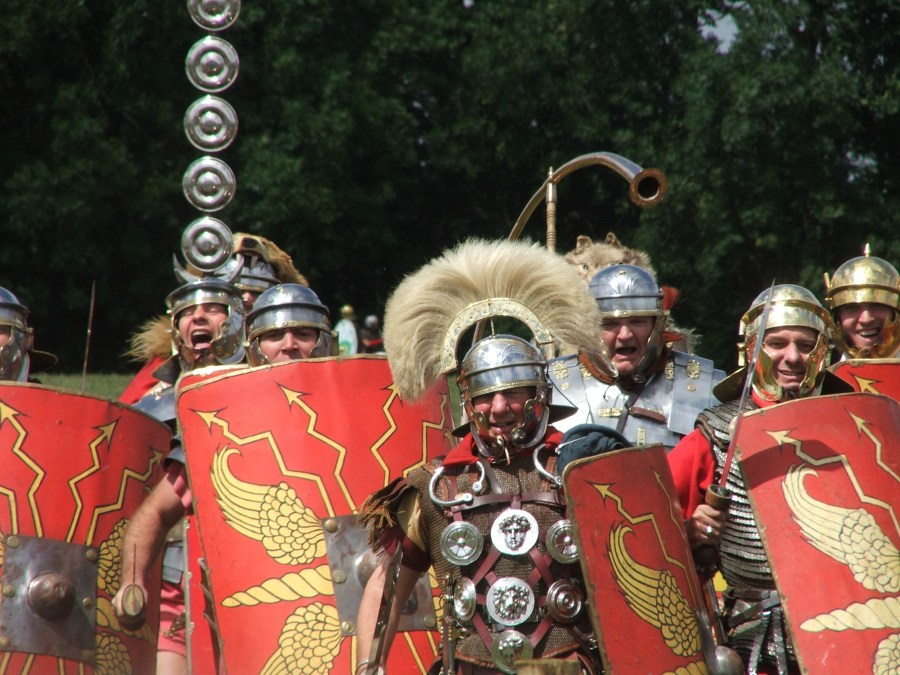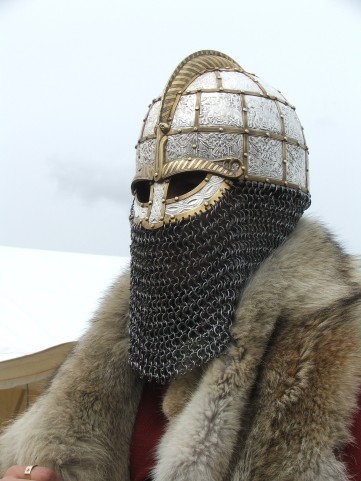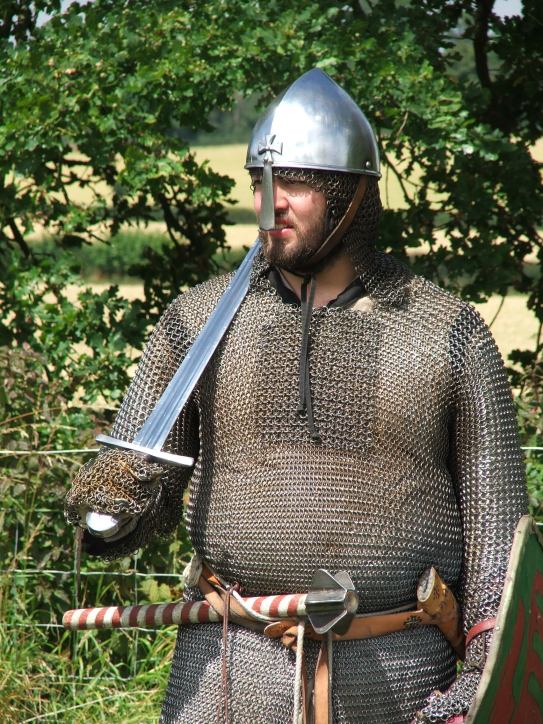Boudicca’s last battle.
It was one of the bloodiest and most important battles in British history yet its location remains a source of heated debate. In AD 60 or 61 a British army led by Boudicca was slaughtered by a much smaller a Roman army led by Gaius Suetonius Paulinus. The battle marked the end of resistance to Roman rule in Britain.
The precise location is not known, but most historians place it between London and Wroxeter in Shropshire, on the Roman Road now known as Watling Street. And, Northamptonshire has two possible sites for the battle. One is a small dip at Cuttle Mill, two miles south-east of Towcester, suggested by historian Martin Marix Evans, the other by John Pegg puts it at Church Stowe. Pegg’s theory can be seen at http://www.craftpegg.com/Battle_Church_Stowe_CP.pdf.

Saxon and Viking
Until the tenth century, the land that became Northamptonshire was an undifferentiated part of Mercia.
During the late 580’s it is recorded that Catocus, king of Gwynllg & Penychen and also a leading light of the British Church, was elected abbot of a large body of monks in what is traditionally known as Beneventum (Bannaventa). The king and saint was run through with a spear and killed during a raid, presumably by the Ciltern Saetan or Middil Engle. It is one of the few more accurately datable events in the kingdom. The same source suggests that Catocus had been living amongst Saxons in the area in order ‘to console the native Christians who had survived the massacres of the pagan invaders’.

Over time Watling Street seems to have become the boundary between Saxon and Viking England, and based on the discovery of two mass graves there may have been two large but unrecorded battles at Cuttle Mill and Church Stowe. Tradition has it that another big battle was fought near Chipping Warden at Danesmoor.
It was the Danes that first recognised the importance of Northampton itself, which had probably grown around a Roman Crossroads. The town became an inland port which they fortified by building a Burh which has been estimated to have had ramparts 3,000 ft (910 m) in length. A Danish Army led by earl Thurferth was also based in the town.
In 869, a Great Viking Army marched south and Ubba sacked Peterborough. Only a young boy survives who they keep as a pet.
In 921 The Anglo-Saxon Chronicles notes that “The same summer, betwixt Lammas and midsummer, the army broke their parole from Northampton and from Leicester; and went thence northward to Towcester, and fought against the town all day, and thought that they should break into it; but the people that were therein defended it, till more aid came to them; and the enemy then abandoned the town, and went away.”
By 941 Northampton was ruled by Mercians when it faced an unsuccessful siege by King Olaf of York.
In 975 it is said that Leofsi son of Bixi, ‘an enemy of God,’ dispossessed Peterborough Abbey of Kettering for two years, but by the influence of Aethelwold, Bishop of Winchester, possession was regained.
The Danes came to the town again in 1010, this time commanded by “Thorkell the Tall” and the the Anglo-Saxon Chronicle says that “Before the feast-day of St. Andrew came the enemy to Northampton, and soon burned the town, and took as much spoil thereabout as they would; and then returned over the Thames into Wessex, and so by Cannings-marsh, burning all the way”
The Morcar Rebellion
When Siward, Earl of Northumbria and the first Earl of Northampton and Huntingdon died in 1055, it started a chain of events that would eventually lead to the Norman Conquest. As his son Waltheof was too young to inherit, the Northumbrian Earldom was given to Tostig Godwinson, brother of Harold (future King Harold). However, as soon as he was of age, Waltheof was created the first Earl of Northampton. In 1065, Morcar son of Ælfgar, earl of the Mercians, rebelled against Tostig. Gathering an army, he marched south, joined by the men of Nottingham, Derby, and Lincoln, members of the old Danish confederacy of towns, and met Edwin, Earl of Mercia, who was at the head of a force of Mercians and Welshmen stopping at Northampton. Harold, by this time the leading noble in the country was sent to negotiate. Hearing their demands, Harold returned south. The Anglo-Saxon Chronicle tells what happened next: “But the Northern men did much harm about Northampton, whilst he went on their errand: either that they slew men, and burned houses and corn; or took all the cattle that they could come at; which amounted to many thousands. Many hundred men also they took, and led northward with them; so that not only that shire, but others near it were the worse for many winters.” The Northamptonshire Geld Roll (c.1070) records 900 hides, about a third of the county, as waste. As a result, Tostig was deposed in favour of Morcar. Tostig then left England for Norway and the rest as they say is history.

